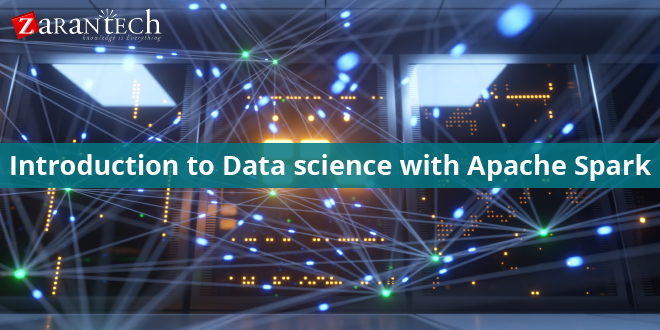Introduction to Data science with Apache Spark
Category: Apache spark and scala, General Posted:Dec 14, 2016 By: Robert In general, companies use their data to make decisions and produce data-intensive services and products including prediction, recommendation and diagnostic systems. To perform this, require some set of skills on these functions and these skills are collectively referred as data science. If you want to take your skills to the next level with Data science with Apache Spark training and certification, you have reached the right place. This article presents some of the useful information about the Data science and Apache Spark.
In general, companies use their data to make decisions and produce data-intensive services and products including prediction, recommendation and diagnostic systems. To perform this, require some set of skills on these functions and these skills are collectively referred as data science. If you want to take your skills to the next level with Data science with Apache Spark training and certification, you have reached the right place. This article presents some of the useful information about the Data science and Apache Spark.
Introduction to Data Science
Data science is an emerging work field, which is concerned with preparation, analysis, collection, management, preservation and visualization of an abundant collection of details. However, the term implies that the field is strongly connected to computer science and database. However, in order to work effectively with Data science, several other important skills like, non-Mathematical skills, communication skills, ethical reasoning skills and data analysis skills are also required. Data scientist plays an active role in the design as well as the implantation task of some related fields like data acquisition, data architecture, data archiving and data analysis. The influence of Data science in businesses is something more than the data analysis.
With the development of several new technologies, the sources of data has increased largely. Machine log files, web server logs, user presence on social media, taking footage of users visits to the website and several other amazing data sources have made an exponential progress of data. Individually, the contents might not appear massive, but when accessed by several number of users, it delivers petabytes or terabytes of data. Such a large amount of data not comes in the structured format always, it comes in semi-structured and unstructured formats too. This roof is considered as Big Data.
The main reason for considering big data most importantly today is for forecasting, nowcasting and to form models to foretell the future. Though, incredible data amount is gathered, only little amount of data is analyzed. The process of deriving information from big data intelligently and efficiently is referred as Data Science. The following are some of the common tasks included in the data science:
- Define a model
- Prepare and clean the data
- Dig data in order to identify useful data for analyzing
- Evaluate the model
- Utilizing the model for large-scale data processing
- Repeat the process until the best result is achieved statistically
![]()
An introduction to Apache Spark
For the development of big data, Apache Spark is considered to be the most exciting technology. Let us discuss why Apache Spark is most preferred than its predecessors.
Apache Spark is nothing but a cluster-computing platform, which is designed to be general-purpose and fast. In terms of speed, the Apache Spark extends the most famous model called MapReduce to effectively provision several kinds of computations, including stream processing and interactive queries. There is no doubt that speed is essential for processing large datasets. The main features of Apache Spark are its speed and capability to execute computations in memory and the system is also more efficient than MapReduce for complex applications running on a disk.
Purpose of using Spark
This general-purpose framework is widely used for a various range of applications. The use case of Spark is classified into two categories. They are data application and data science. There are several imprecise usage patterns and disciplines in Spark. Most of the professionals utilize both the skills. Spark supports various data science tasks with several number of components. It facilitates interactive data analysis by using Scala or Python. Spark SQL includes an unconnected SQL shell, which can be utilized to make data exploration, using SQL.
Machine learning, as well as data analysis is provisioned via MLLib libraries. It is also possible to call out external programs via R or Matlab. Spark enables data scientists to handle issues with abundant data size more effectively when compared to working with other tools like Pandas or R.
Next to data scientists, another popular category users of Spark are software developers. Developers use Spark to develop data processing applications using the knowledge of the software engineering principles like interface design, encapsulation as well as object oriented programming. They utilize their knowledge to design and develop a software system, which gears the business use cases.
Spark offers an easy mode to parallelize applications across clusters. It also hides the difficulty of network communication, distributed systems programming and fault tolerance.
Spark gives them sufficient control to supervise, monitor and tune applications when permitting them to implement tasks quickly. Users prefer to use data processing applications of Spark due to its benefits like simple to learn, a wide range of functionality, reliability and maturity.
![]()




 99999999 (Toll Free)
99999999 (Toll Free)  +91 9999999
+91 9999999